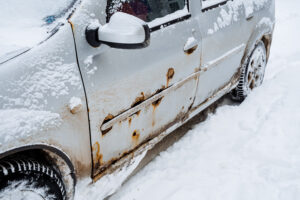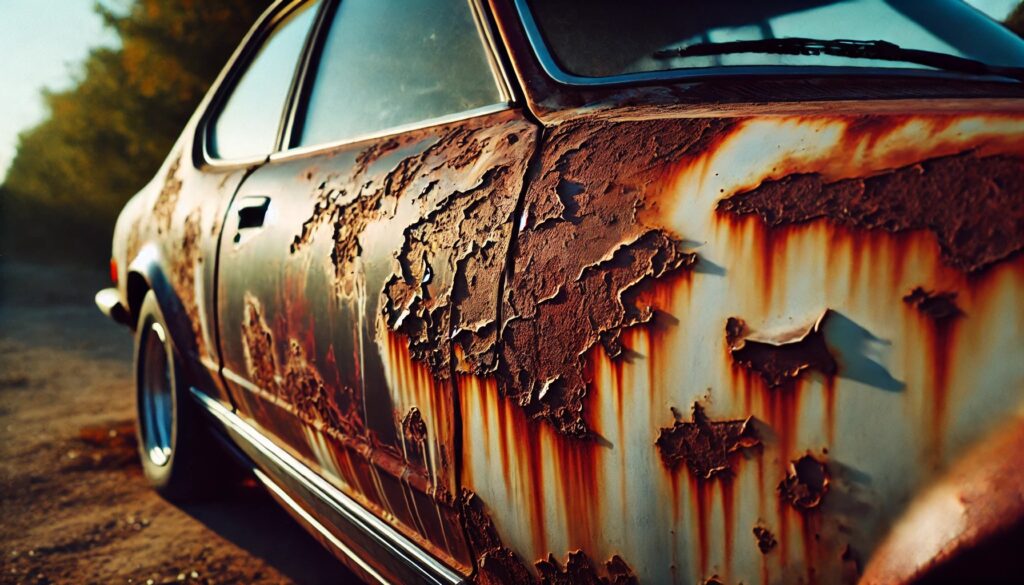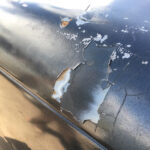Galvanic corrosion is a common issue that can occur in cars, especially in those that use different metals in their construction. When two different types of metals come into contact with each other in the presence of an electrolyte (such as saltwater), galvanic corrosion can occur. This process weakens the metal, leading to rust and damage over time.
Preventing galvanic corrosion is crucial for maintaining the longevity and appearance of your vehicle, as well as for reducing future car fixing costs. In this article, we will explore how to cars not have galvanic corrosion, discuss prevention techniques, and explain why car maintenance is essential in protecting your vehicle.
Galvanic Corrosion in Cars

Before discussing how to prevent galvanic corrosion, it is important to understand how it happens. Galvanic corrosion occurs when two dissimilar metals are in contact with each other and an electrolyte, like saltwater, facilitates the exchange of electrons between them. This causes one metal (the anode) to corrode, while the other metal (the cathode) remains protected. In vehicles, galvanic corrosion can often occur when aluminum parts come into contact with steel or other metals.
When corrosion happens, it can affect several areas of your car, including the body, frame, and various components. If left unchecked, galvanic corrosion can lead to significant structural damage, requiring expensive vehicle fixing and even replacement parts. Fortunately, there are ways to prevent it, and understanding how to cars not have galvanic corrosion is key to reducing car maintenance expenses in the long run.

1. How to Cars Not Have Galvanic Corrosion: Material Selection
One of the best ways to prevent galvanic corrosion is by carefully selecting materials during the manufacturing process. When designing a car, manufacturers can minimize the use of dissimilar metals in areas where contact is likely. This reduces the risk of corrosion by eliminating the possibility of electron exchange between different metals.
However, if dissimilar metals must be used, manufacturers can incorporate protective coatings or barriers between the metals. For instance, applying a non-conductive coating or sealant can prevent direct contact between different metals, thus reducing the chance of corrosion. As part of auto fixing, these protective measures are essential for preventing future car maintenance needs related to corrosion.
2. Use of Corrosion-Resistant Metals
Another strategy for preventing galvanic corrosion is using corrosion-resistant metals in the car’s construction. Metals like aluminum, stainless steel, and certain alloys are naturally more resistant to corrosion. By using these materials in key areas of the vehicle, manufacturers can significantly reduce the risk of corrosion, leading to fewer vehicle fixing issues down the line.
For car owners, understanding how to cars not have galvanic corrosion can help when making decisions about repairs and replacements. If a certain component of the car is prone to corrosion, it may be wise to replace it with a more corrosion-resistant material during your next car maintenance or car fixing session.
3. Regular Car Maintenance: Cleaning and Inspecting
One of the most important factors in preventing galvanic corrosion is regular car maintenance. Keeping your car clean, especially in areas prone to salt exposure (such as coastal regions or places with snow and ice), is essential. Salt acts as an electrolyte, facilitating the corrosion process, and can accelerate galvanic corrosion when it comes into contact with metals.
Regularly washing your vehicle, paying particular attention to the undercarriage and areas around the wheels, can help remove salt and other corrosive substances. Additionally, applying a protective wax or sealant to your car’s paint and body can offer an extra layer of protection. By cleaning car paint and maintaining the vehicle’s finish, you create a barrier that shields the metal beneath from corrosive elements.
Routine inspections are another crucial aspect of car maintenance. Checking for early signs of corrosion, especially where dissimilar metals are in contact, can help you catch potential issues before they become major problems. Early detection allows for timely auto fixing and minimizes damage to your vehicle.
4. Protective Coatings and Barriers
Applying protective coatings is another effective way to prevent galvanic corrosion. These coatings act as a physical barrier between dissimilar metals, preventing the electrolyte from causing corrosion. In the automotive industry, manufacturers and car owners often use paints, sealants, and underbody coatings to protect vulnerable areas of the car.
When applying a protective coating, it’s important to ensure full coverage of areas where different metals meet, such as around fasteners, joints, and connectors. Even minor exposure to moisture or electrolytes can initiate corrosion, so thorough application of protective coatings is essential during auto fixing and vehicle fixing procedures.
For car owners, it’s a good idea to include applying these coatings as part of regular car maintenance. Many professional services offer undercoating and paint sealant applications that can extend the life of your vehicle and help prevent galvanic corrosion from forming.
5. Anodic Protection
Anodic protection is a technique used to protect certain metals (like aluminum) from corrosion by making them the anode in the electrochemical reaction. While this may sound like it would encourage corrosion, anodic protection can actually slow down the rate of corrosion when applied properly. This technique is commonly used in industrial applications and can be applied to vehicles as part of more advanced vehicle fixing processes.
In automotive repair and car fixing, anodic protection may not always be the first option, but it is useful in specific scenarios, particularly for high-performance or specialized vehicles where corrosion is a significant concern. Discussing anodic protection with a professional can provide added longevity to your car, especially if you live in a region prone to galvanic corrosion.
6. Proper Electrical Grounding in Vehicles
In addition to physical contact between dissimilar metals, electrical currents can exacerbate galvanic corrosion. Ensuring that your vehicle has proper electrical grounding can help prevent corrosion. When electrical systems are grounded properly, it reduces the risk of stray currents flowing through the car’s body, which can increase the likelihood of galvanic corrosion.
For car owners dealing with electrical issues or during auto fixing, it’s essential to verify that all wiring is correctly grounded. This can help reduce the risk of corrosion and minimize future vehicle fixing needs. Proper grounding should be part of any comprehensive car maintenance plan, as it contributes to the overall health of the car.
Conclusion: How to Cars Not Have Galvanic Corrosion

In conclusion, preventing galvanic corrosion is an important aspect of car maintenance and vehicle longevity. By understanding how to cars not have galvanic corrosion, both manufacturers and car owners can take proactive steps to protect vehicles from this damaging process. From selecting corrosion-resistant materials and applying protective coatings to regularly cleaning and inspecting the car, there are several ways to reduce the risk of corrosion and keep your car in top condition.
Regular car maintenance and prompt auto fixing can also prevent corrosion from becoming a major issue. By taking the necessary precautions, you can avoid costly repairs and extend the life of your vehicle. Whether you are dealing with vehicle fixing or just looking to protect your car from corrosion, keeping these tips in mind will ensure that your car remains in excellent condition for years to come.
Through careful planning and consistent car maintenance, you can successfully protect your vehicle from galvanic corrosion, preserving its value, appearance, and structural integrity.



